Skype for Business is a Microsoft software for videoconferencing or video calls that allows us to connect with colleagues or external staff at our University anywhere in the world. To hold these videoconferences it is necessary to install the software on our computer and we could hold meetings, tutorials, etc. with our webcam and microphone.
In Skype for Business we can:
- Start conversations via instant messaging, voice calls and video calls.
- See when our contacts are available online, in a meeting or in a presentation.
- Display our screen during sessions or give control to other participants.
- Use Skype for Business from other Office programs to chat, call or join an active meeting.
To be able to use this software, it is necessary to have an active Office 365 account or to create a new one.
When creating a new account, it is recommended that you choose your email address ( i.e. name.surname@uv.es) and a different password - in any case - from your official UV account as your login.
In the following link you will find instructions on how to create this account or install Office 365.
Skype for Business can be installed in two ways:
- As part of the Office 2016 suite. If we already have Office 2016 installed on our computer, by default we will already have Skype for Business installed and we can go directly to the Settings section of this document.
- As a standalone programme within the Office 365 suite. (Next)
Installation from Office 365
Access the portal.office.com website and log in with your Office 365 user credentials.
Once inside, select: Install Office → Other installation options
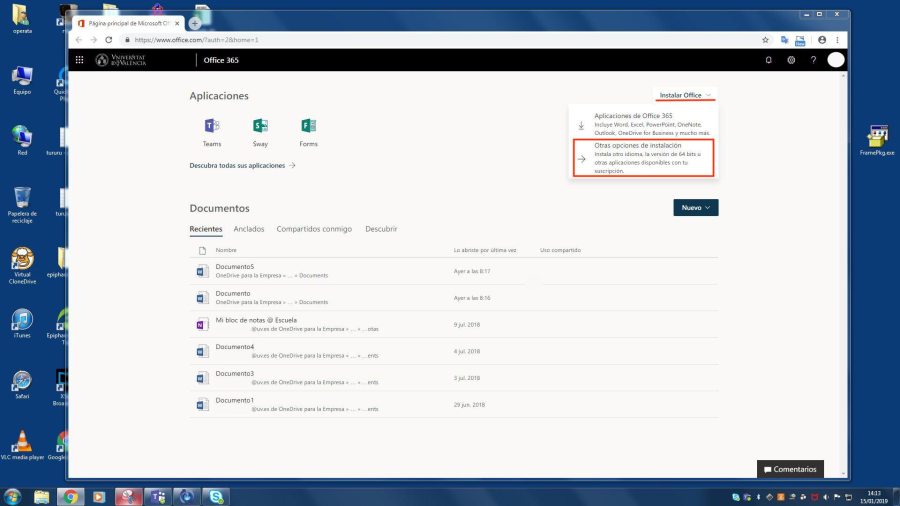
Select Skype for Business from the menu on the left-hand side...
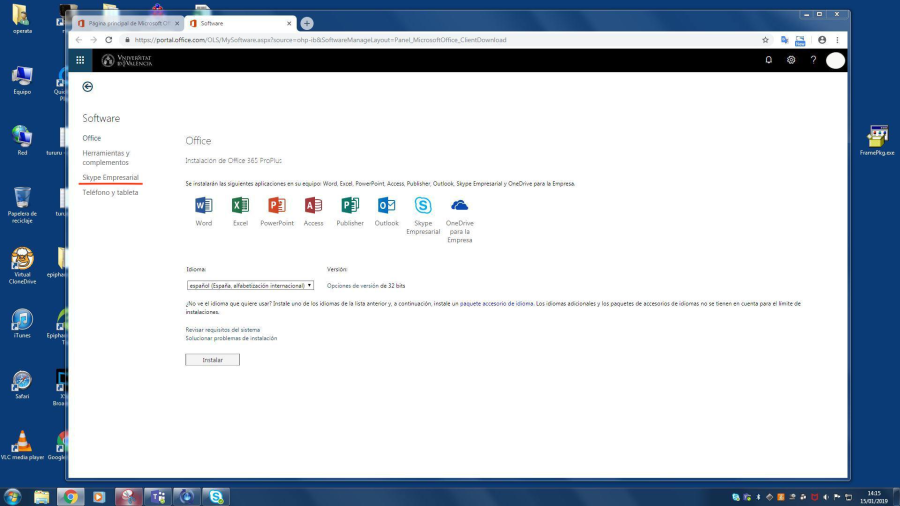
And then choose Skype for Business followed by the "Install" button.
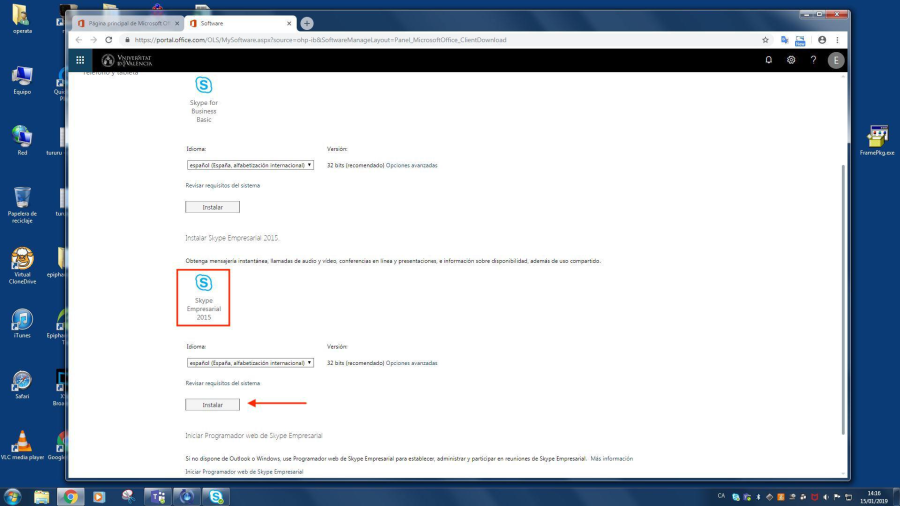
MAC OS X users:
No additional configuration is required. The application is launched and the user's personal Office 365 credentials are entered.
Windows users:
The user must make a small change in the configuration. Below, we show the screenshots of the steps to be taken.
First, run the application, and click on the configuration wheel indicated in the following picture
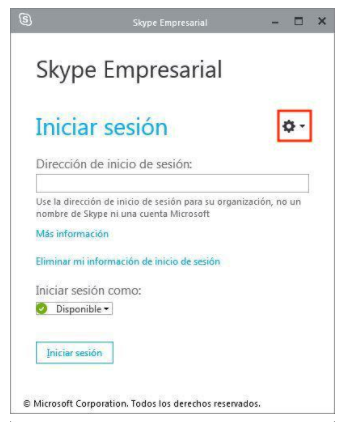
Then select "Tools" - "Options".
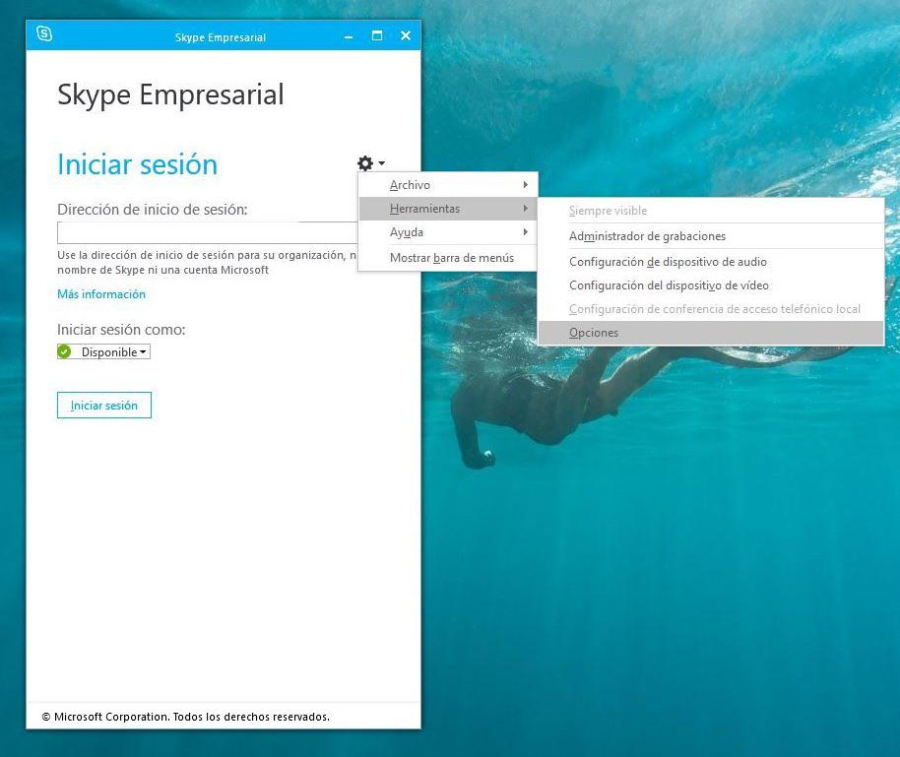
And in the window that opens choose "Personal" from the menu on the left, followed by the "Advanced" button.
Choose "Manual settings".
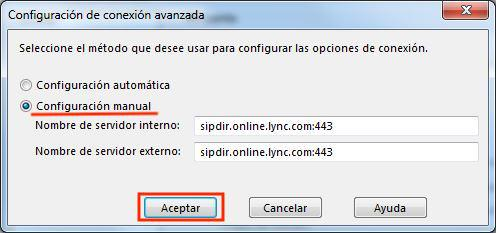
And enter the following nameservers:

Followed by the "Accept" button.
The programme configuration is now complete. All that remains is to identify ourselves with our user (Login address), click on "Login" and then we will be asked for our password.













